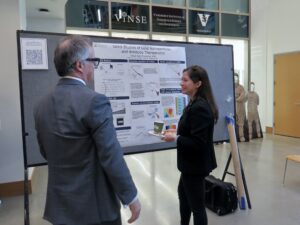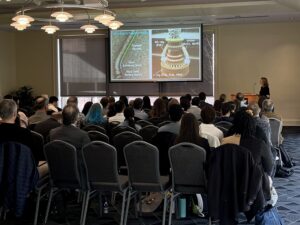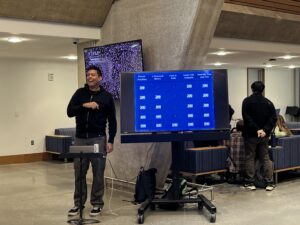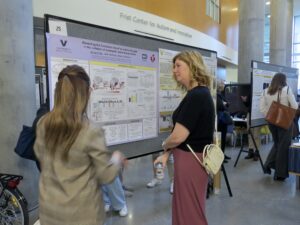By Cameron Cohen
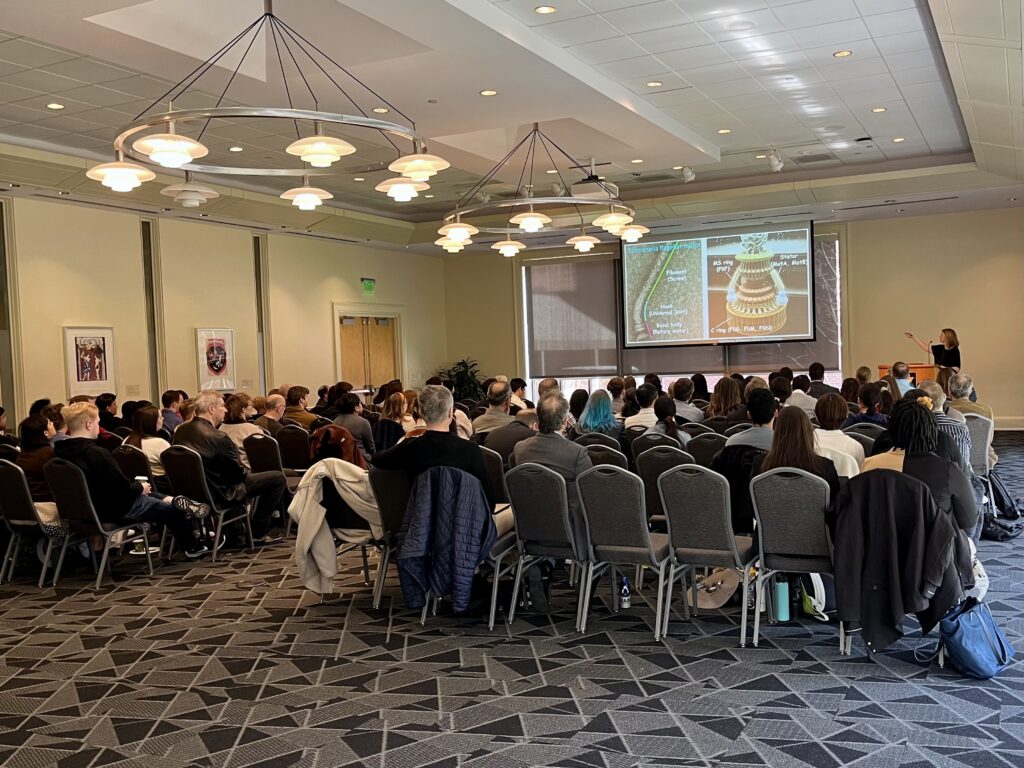
The Center for Structural Biology hosts an annual symposium in which it brings together local and national researchers to discuss developments and up-and-coming work within the field of structural biology. The CSB Symposium 2024 kicked off early on March 28 with opening remarks from the center’s founding director, Walter Chazin, Chancellor’s Professor of Medicine, professor of biochemistry, and senior associate dean of biomedical research education and training.
“The center has much to celebrate,” Chazin said, as it now houses more than 150 researchers and nearly 30 faculty, and this symposium serves as an opportunity to strengthen the structural biology community at Vanderbilt.
In conjunction with sponsors Xenocs, Refeyn, Bruker, Nanosoft, and ThermoFisher Scientific, the CSB organized a full program of events including a variety of speakers, poster presentations, and science-themed Jeopardy. Several School of Medicine Basic Sciences faculty members were chosen to give talks about their research, spanning topics including chemotaxis, heme production, and the future of structural biology.
The first CSB and Basic Sciences faculty member to present was Doug Kojetin, associate professor of biochemistry, who touched on the widespread applications of protein nuclear magnetic resonance spectroscopy. Protein NMR, which uses the magnetic properties of nuclei to determine protein structure, should be regarded as “a toolkit of approaches,” he said. In his research, Kojetin has used protein NMR to uncover the active and repressive states of a clinically important nuclear receptor, paving the way for future drug development.
Tina Iverson, professor of pharmacology, spoke next on chemotaxis, or the movement of a cell in response to chemical stimuli. Iverson explained how her lab used cryo-electron microscopy to reveal critical details about the structure and symmetry behind bacterial movement. The team then constructed a model of motor function to explain movement observed in Salmonella flagella. This project was many years in the making, and left attendees with a bit of advice: don’t shy away from daunting research, but rather “approach something hard because it’s interesting.”
In her presentation, Breann Brown, assistant professor of biochemistry, outlined her use of structural biology to study the production of heme, a molecular component of hemoglobin that is important for binding oxygen in the bloodstream and has implications for the treatment of several blood disorders, including sickle cell anemia. Brown discussed her research discerning the protein structure and activity of ALAS, a yeast protein involved in the heme biosynthesis pathway. Her team found that removing the C-terminus of ALAS altered the entire protein. “Think of [the C-terminus] like a thread on the end of a scarf,” Brown said. “Pull off the C-terminus and the active site begins to unravel.” However, when trying to expand their findings to mammals, Brown’s lab found that removal of the C-terminus in the human counterpart of ALAS resulted in an increase in protein activity. “Never make any assumptions,” Brown concluded. “Always do the experiment.”
The last Basic Sciences faculty member to speak at the symposium was Will Wan, assistant professor of biochemistry. Research in the Wan lab focuses on Ebola viruses broadly and on the viral matrix proteins that make up the external structure of the virus specifically. Wan has primarily used cryo-electron tomography to investigate viral matrix proteins, which has revealed a beautiful patchwork lattice of matrix proteins. The lab has now expanded to cryogenic-focused ion beam milling, which generates extremely thin slices of cryogenically frozen cellular samples to allow the study of proteins in a cellular environment. According to Wan, this new technique will provide more insight into the assembly of matrix protein lattices.
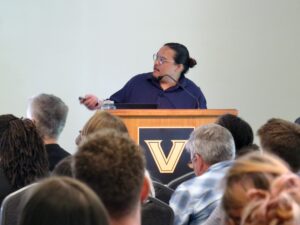
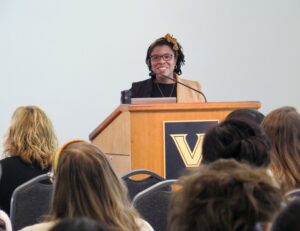
In addition to Vanderbilt presenters, the center featured invited speakers James Fraser and Andrej Sali from the University of California, San Francisco, Nozomi Ando from Cornell University, and Jeanne Hardy from University of Massachusetts at Amherst, who presented their work about “cutting-edge research that offers a better understanding of the underlying forces that regulate life’s building blocks” at the symposium. A well-attended poster session featured 30 posters from graduate students, postdoctoral fellows, and sponsor representatives.
To cap off the day, Ray Blind, assistant professor of medicine, hosted a fun game of science Jeopardy. With categories such as “A Structural History,” “Facts & Folds,” and “Nashville Then and Now,” the room was quickly full of laughter and friendly debate, a scene of joy that wrapped up what couldn’t have been a more successful symposium.
